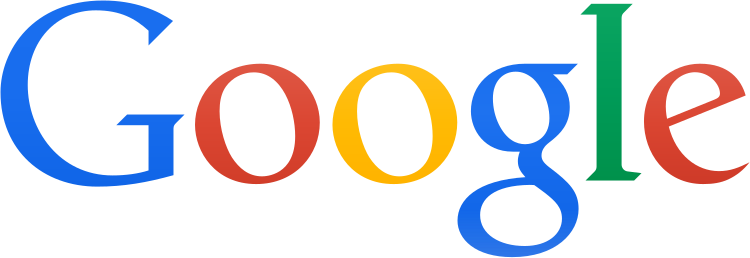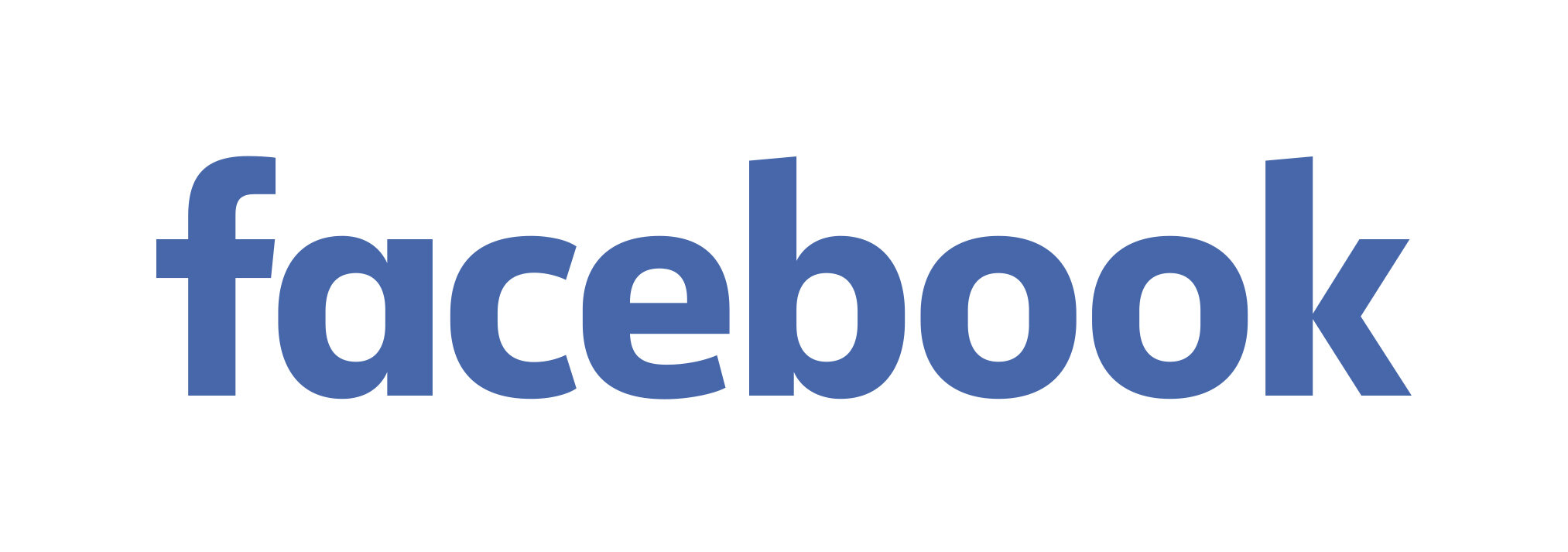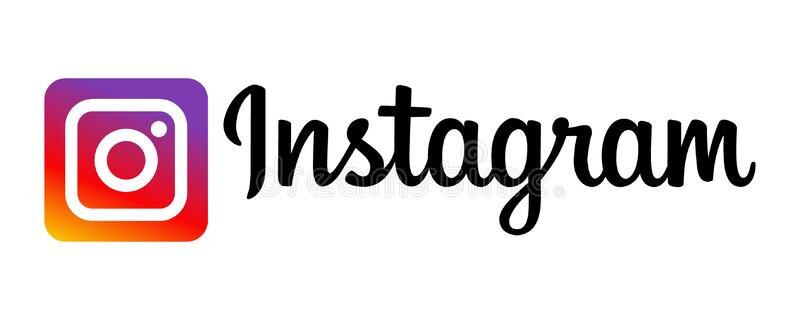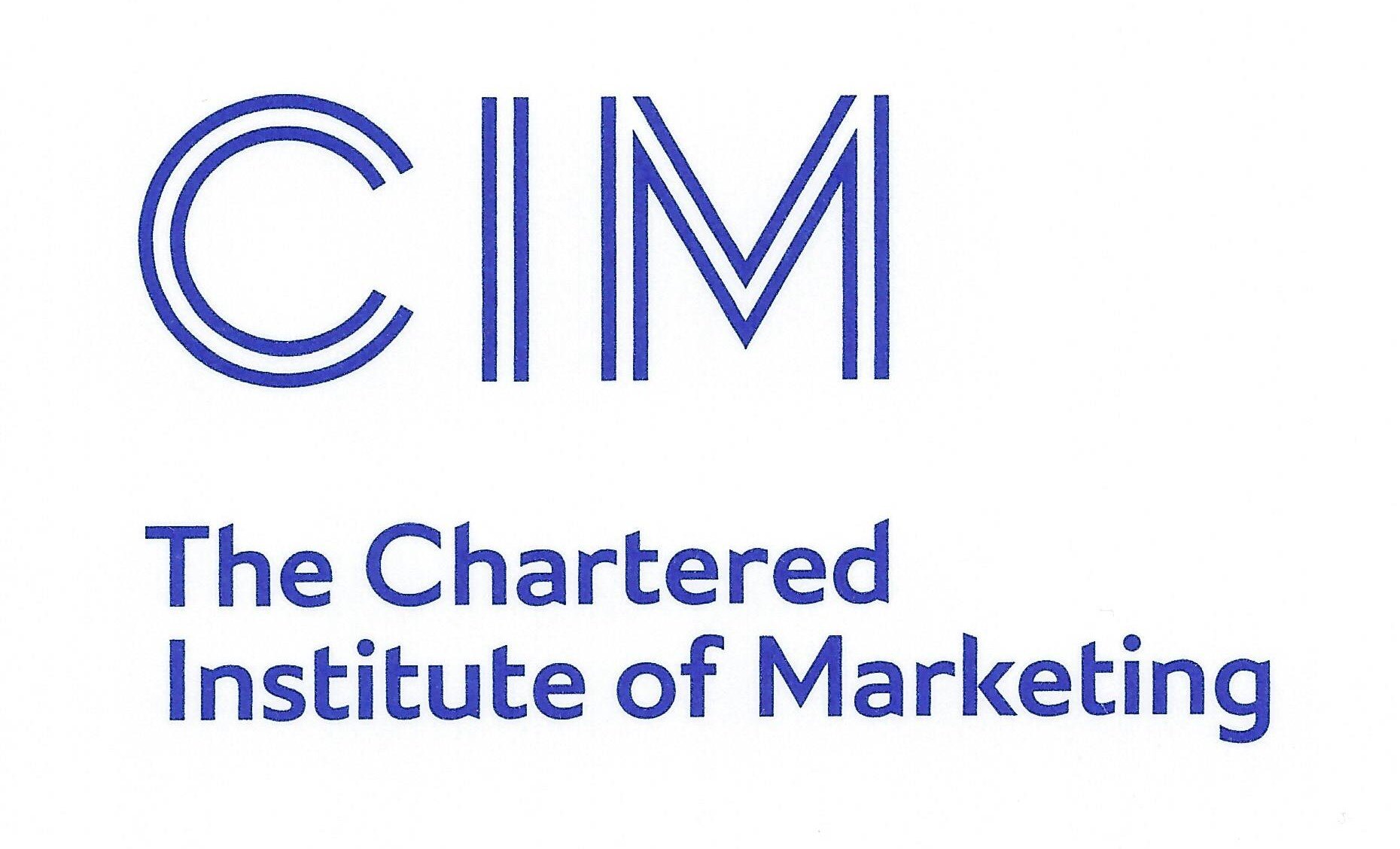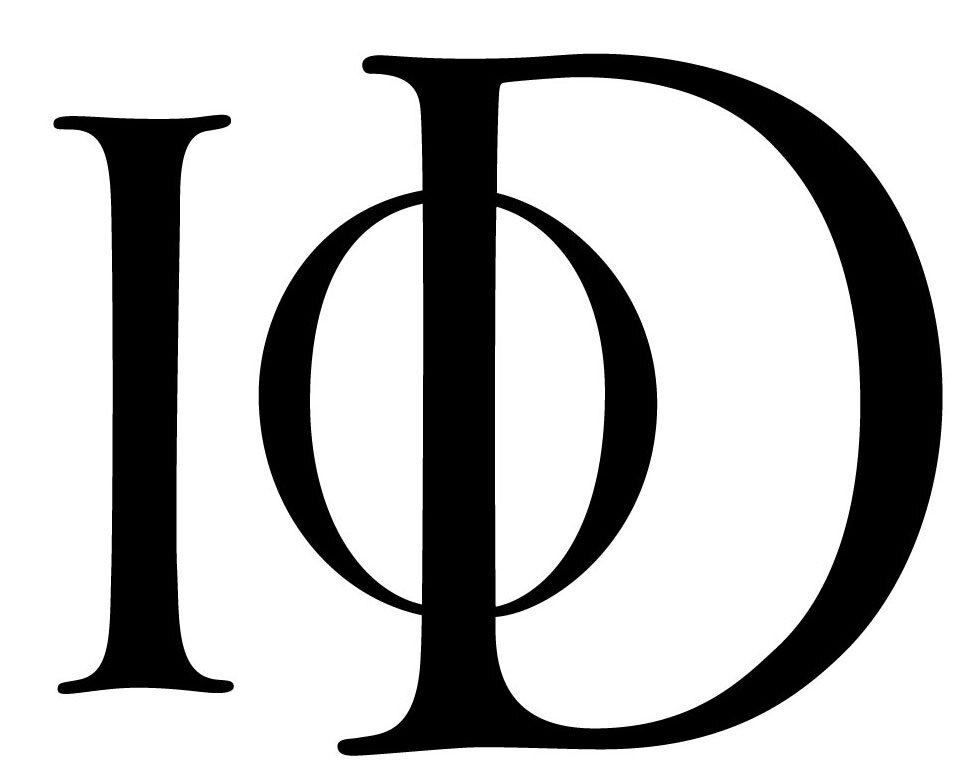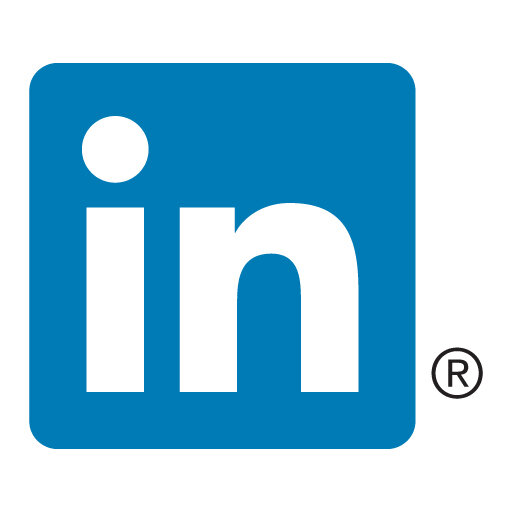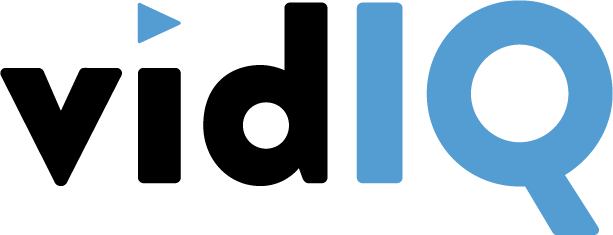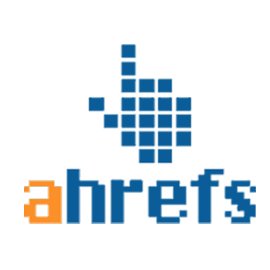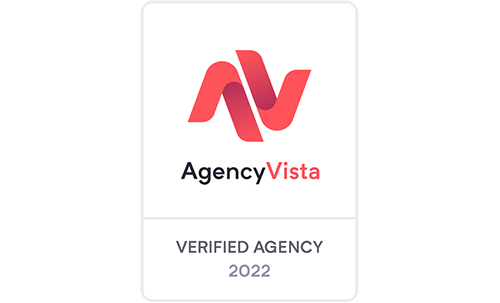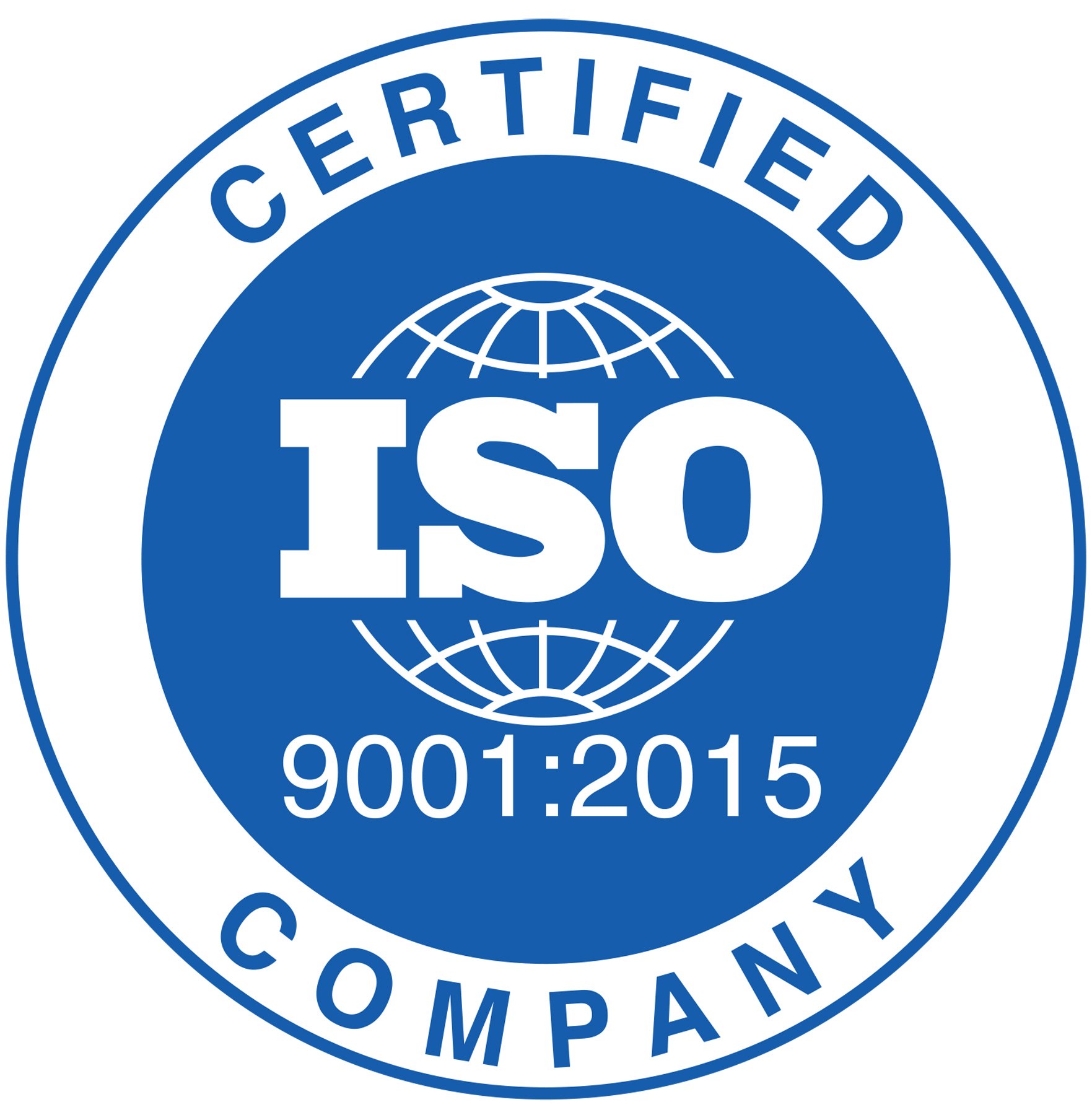HELLO EVERYONE! WELCOME TO another episode of THE MARKETING INNOVATION PODCAST SHOW!
In this episode on The Marketing Innovation Show, Andrei Tiu and Laurie Nadeau will be looking at how to launch and scale a B2C Food & Beverage product - starting from Branding & Logistics, and going all the way into Marketing Tactics, and generating customer demand. Laurie will also share insights into "tricks" you might be able to make use of, to gain brand exposure in large retail chains, as well as how to use E-commerce, Social Media & Influencer Marketing to generate sales. Laurie Nadeau is the owner of Smokin’ Mary - a popular US Smoked Bloody Mary Mix. And she may be all dolled up in her signature red-and-white polka-dot dresses, but don’t let the pinup girl persona fool you. Nadeau is a savvy, successful businesswoman, who has managed to grow Smokin' Mary from a small family business to a National (US) recognised brand. She and her husband of 14 years, Marc, pour about 500 to 1,000 samples of the competition-winning concoction at the 45 or so food-and-beverage shows they attend each year, and have grown a large national distribution network
If you want to listen to this episode instead of reading about it, choose your favorite platform:
You can also watch the episode on YouTube:
LET’S DIVE INTO THIS EPISODE!
Andrei: On today's episode, as you probably saw in the title, we have a very fresh topic. Is the first time that we talked about this on the on the podcast. So we will discuss about lounching and growing food and drinks business. So we'll go in we'll go together with Laurie into the nitty gritty of how to brand a company, how to grow it in a very competitive market, as well as how to sustainably distributed in shops and make it as a national or even global business. So, Laurie, very excited for this. Tell us how did you start? What was your story before Smoking Mary?
Laurie: Well, it's interesting. I actually have always been in more professional businesses and I started this kind of accidentaly- as all good things start. I started this because I was helping some my clients because I was a broker at the time. And I was helping some clients find house and they had asked me to do some farmers markets because they had a cousin who had some greenhouse tomatoes that needed to move them. So we were in Park City, Utah at that time in it where the season for growing produce was really small. So we had a surplus of tomatoes, after all those others started coming out of the ground and we had to find something to do with them. I've learned how to can which was completely new thing to me. My mother always done it growing up, but I never participated. So I learned how to can and I was doing salsas and sauces and pasta sauce, you name it. And I still had a whole bunch of tomateos left and they were in the freezers and somebody said: "Why don't you do Bloody Mary mix?". I think I've never thought of it because truly, I only drink Bloody Marys on two different occasions. So I ended up creating this- I just opened the fridge and went through a whole bunch of spices and condiments of the fridge because the recipe I picked up on the internet only had four ingredients and it wasn't enough for me because I like a lot of flavor. After I got that kind of dialed in and I decided to smoke the tomatoes. And I done that with the salsa and it was fantastic.
Andrei: Amazing, amazing, love it! So it was basically like a sort of an experiment for you as well as the desire to be creative about it and to try to invent something of yourself, right?
Laurie: Yes. The intention was never to take this thing to market. It was just always on creating and fixing, making it better, because I have this little mantra that says: there's got to be a better way, no matter what it is that you're doing. There's always a better way. And so I was dead set on creating a better Bloody Mary mix, one that doesn't water down and lose its flavor and all the things that typically happen. It was an interesting ride. I'm sure we're going to get more into the tasting and kind of the process that started as I was going through the five years of tweaking this and making it and testing it and sampling it to everybody.
Andrei: Let's do it now! Let's go straight into the subject. So you were experimenting with this recipe and you started to develop your own flavors. How did it happen when you have started to think about it as a commercial product and thinking about a strategy too, to brand it and to produce it at scale and maybe to start distributing it. Tell us a bit more about your journey there.
Laurie: The journey... I could almost write a book and it would be a thick book. The journey was really, really interesting.
Now that I look back at it while I was in it, I thought I wanted to pull my hair out, because I didn't know anything. And this isn't something where you go and take a college class and learn how you do it step by step- there is no guide, there's nothing. It's just kind of figuring it all out on the whole journey.
So, when I first decided, after doing all the sampling and tasting and I did that throughout the US, I was sending bottles all over, everywhere. People I knew, people I didn't know, because it was important to get an accurate feedback on the product: it's to this, it's too that, needs more of this, need that, because typically your friends and family are not going to be 100% honest with you. They don't want to hurt your feelings. And I'm like: "Tell me the truth." So then I reached out to people that were maybe Bloody Mary experts. So those were really true accurate responses and feedback that I would get. But of course, everybody wanted to be included. When I was doing the recipe I'd have two five gallon pots on the stove, and I would be tweaking one a little bit and stirring it up and tasting it and then I tweaked the other one because it was a little bit different- I really wanted to get this right. So, at that point, I started going to some of the food industry. There's a big one in San Francisco every year that's called Fancy Food. And so I attended that, just to get an idea of what is that industry like as a business? Met some people, had some great conversations with people who had been in the industry for many, many years. Got some feedback, took some classes at that trade show and then learned that I need a co-Packer because I need to manufacture this somewhere if you want it to be successful, and you want the consistency. The biggest thing for me was: I didn't want employees, I didn't want to deal with that aspect because to me, what I've seen in my life is that employees tend to be kind of a pain. They can be painful for an employer. So when you use a co-Packer, which is a manufacturer: they take your recipe, they have all the licenses, the food, product, licensing, everything that you need, they have all the insurances, and they charge you a little bit more to do that. But it's worth it. So then, there's the challenge of finding a co-Packer that can actually produce your product. That took a while. I did find one in California, when we first started, it was a small one. We were doing business with them for our first probably three years. And then they had some business challenges and we were without somebody to do production because we had put all of our eggs in one basket, which is another challenge. We ended up going through another one which didn't work out so well for us. And then we finally found our sweet spot. As far as logistics go, you need to really, really consider logistics and where you place your company and where your products are going to be shipped out of: for us, being a liquid product, in glass. We were in California and to ship something to Florida was $60. Nobody's going to pay $60 for shipping, right? So we missed out on the whole East Coast for business. Nobody wanted to do business with us because they couldn't afford to. And our product was a premium product on top of that, so the price was really high and so we've moved it to Texas. That was last year. So when you talk about distribution, distribution is typically through distributors or brokers. They're the ones that pretty much make all the money. As a manufacturer, we hardly make pennies- it's something also to consider. Were getting more attention that way, and they're the ones that will be the supply chain to get us into the different stores, bars, restaurants. And so we've had to revamp a whole bunch of stuff. Now and COVID was actually a blessing in disguise for us because it's allowed me and any partners to really refocus marketing efforts, just kind of the whole path from manufacturing professionally to the end user.
Andrei: I want to ask a question around this part, because I really think it's interesting how you went about for scaling the business and entering the retailer's because. Personally, I'm not in the B2C space and I'm not very proficient in how supply chain works in this space, but I think some of our listeners might not be either. So, just for the ones that maybe are aspiring to opening a B2C company, distributing or creating products, or maybe the ones that have already startups and they are looking at scaling their operations or getting into retailers, basically, the strategy was to go to this manufacturers that were very good, they had all the links, all the logistics, and they were helping you with manufacturing the product as well as getting out to the retail space.
Laurie: Well, no. The co-Packer that manufactures our product, they don't have anything to do with distribution. Their focus has to do with the product, the food safety, the ingredients, and then delivering you the finished product, the bottles. And then as far as like distribution, that's a whole new thing that I have to do.
Andrei: Gotcha. So that's when we go into the way that you went about branding the product, about raising awareness about it and then promoting it. Let's dive into that subject at festivals first. Right?
Laurie: Yes. When I was in that amid five years of creating the recipe and kind of getting it all ready and dialed in and tested by other individuals to get their feedback, I started about three and a half years into it was when I realised that maybe I do want to take this to market, this might be kind of fun. So at that point, a year and a half before we actually launched our first product, I started with the branding. And I worked really closely with a branding company to get that right. Because it did take a year and a half to get the logos created, to get the brand message that we wanted to receive it. Because a brand isn't just a logo. It's so much more than that. And when you understand it, you'll know why it takes a year and a half. You cannot skip that stage. That's probably your most important stage. On top of having a good product, obviously, at the branding part, the trademark, I recommend strongly that you trademark not only your logo and your brand, but your product name. And that does take time- in the US it takes about 18 months to get your trademark completely through. I know that you said we had a conversation about this- in the UK, it takes about 12 months. I'd say it's probably between 12 to 18 months no matter where you are. And I have been fortunate that I had a lot of experience in the legal industry because I worked closely with the attorneys, I did sales, software sales to them as another past experience that I have. So I had enough experience and connections so I was able to have those attorneys helped me and it didn't charge me anything, which was fantastic. So I can do my own trademark in the US cost $225. The US trademark Center does have an assistance phone number you can call them, they'll answer any questions. They were so helpful. And when I actually got my first trademark through on my own, not being an attorney, I was shocked, but very excited, too. And then, of course, the branding, that's logos, designing product sheets.
So you really have to focus on the message that you want to put out there that has to be enticing for those to give you a chance.
I was also very fortunate that I was introduced to some people that are in management and owners of different businesses that took on my product just because it was recommended to them. So getting in those first couple stores was fun. And then of course, as you mentioned, then you have to create your consumer demand. Because it's tough to decide which one's first, do you want to create consumer demand first, or do you need to be in stores? Because you can have consumer demand, but nowhere to buy, it doesn't work. So we allow that we set up our website so they can buy directly of our website, which worked well. So you kind of need to do both. You've got to have your website set up for e-commerce. And you've got to make sure that your shipping charges aren't too high, which is negotiations with the different carriers are. And then of course, we got into those couple stores and we started doing all these festivals that I had mentioned the other day. We're going into our fifth year now.
Andrei: Okay, super cool. Apart from these things about branding and obviously going and choosing the right partners and everything, was there anything else that has helped you maybe in particular, to scale and growing the brand exponentially?
Andrei: Absolutely. We have a diversified supplier program. And basically what that program is, is it will take bring in certain woman-owned businesses or if you have any other diversification, you can come into and get into that store or that chain of stores as a woman-owned business because they get tax breaks every year. In order to get that tax break, they have to have a certain percentage of these diversified individuals. So that's definitely a great way to kind of slide into the store if you're having trouble getting into that store. Because now you have that extra card to work with.
Andrei: Very cool. Okay, um, so you guys you have to look this up, but I think it's a very nice hack. I think it's the bigger brands in the supply chain industry that would be knowing about these tax brackets and try to maximize.
Laurie: So the big names here like Kroger grocery store chain, it's throughout the whole US and they have hundreds of stores. So, o, course they're concerned about taxes and they search what's one more thing they can do as a tax benefit?
Andrei: Super, super well thought and thank you so much for the hack. Okay, also I think it's worth mentioning because I know that some of the people tuning in would be listening to the show, but not seeing the screen. And I think going back to the branding and having your brand shine through, I think it's worth mentioning that you got here all dressed up and with a full brand on your own, wearing an amazing polka dress, and your looks are up straight on. Really nice, thank you for all the preparation.
Laurie: Well, they need to go and look at the video if they're not watching it. This was my husband's idea because when we started doing our first appearances and shows, I had the Smoking Mary t-shirts made up and I was wearing t-shirt and jeans. So I just looked like everybody else that have more Farmers Market selling stuff. And he says you need to stand out, you need to wear a polka dot dress or something to that effect. If any of you aren't seeing the video, you can go to my website and you'll see the different looks that I take two different shows.
So that's part of that, that branding in that persona. This is a persona we created.
And with the pin up being kinda retro, we now have an RV camper that we take to all the different shows. The back window says the Bloody Mary roadshow. So we are a driving billboard down the road every time we're going to a show, because we need to get the message out everywhere as many ways as we can. And that was a fantastic way to do it. Now you can't cut people off or flip them the bird as you're going down the road, which sometimes it's hard to do when you get upset because somebody cuts you off. Can't do that. Not when you're in the rolling Billboard. What's been fun with that is people will get on Instagram, and they would say: "Hey, we just saw you driving down this freeway. Looking good!" So it's like: "Okay, this is working." Because you never know. I mean, in marketing, it changes so much. You don't know what's going to work. If something works today, it's not guaranteed it's gonna work tomorrow, it changes too often. So, definitely we have fun with it. We're doing good. We're changing it up all the time. But definitely sticking to the polka dot dress.
Andrei: Super cool. So basically, what you did was, you got the brand, put it out there on every channel that you have not necessarily digital, giving the experience of the brand to anybody that could capture it. So whether that was on the road, whether that was when you guys were actually sampling or even sending or simply everywhere somebody could encounter you. Now, I think would be really interesting for our listeners to go into your choice of going with the festivals. Doing sampling for example there, rather than going down the traditional route, which I think in Europe is very popular. So in Europe, when somebody has a startup idea for a premium product or a handmade food or drinks product or something more unique, they would try to pitch it to retailers or by going through some brokers. And then they would go to either very small exhibitions or shows or go to trade shows like bigger expositions. Now, probably not that much because of COVID. Why do you choose festivals? I think it's really interesting to find out.
Laurie: Well, there's two reasons. First of all, if we're making money doing it, where we were being able to sell retail and that allowed us to keep the business in a float. It's very expensive to develop a product and take it to market. I can just tell you that. You're not making money instantly, not in the food beverage industry for sure. The only way you can do that is to get sample to as many people as you can and festivals, of at least 50,000 people that attend. And this is over a weekend. Usually it's a Saturday, Sunday, sometimes it's Friday. Some of the shows we do, have 400,000 people, that is an ideal show for us. So if they have 5000, we'll do it only if it's really close to home, because it's a little bit more intimate. We still sell about the same amount, but the idea was mostly to get people to taste it and to introduce it to as many people as possible. And those larger shows are the ones that allows that to happen. And then, of course, they buy it and when they buy it's said: " Where can I get more when I run out?" Well, in the beginning, we said: "You can go on our website, and we sell it on our website." And people would: "Oh, but then I have to pay shipping. We'll just wait until we see you at this festival next year." And then I'm say: "Oh, no, this is not good!" It's good next year when we come back, because people following us, but you want to create the demand for them to continue using your product. It's a consumable, you want it consumed. So we finally were able to get in different stores in the locations where we were doing our festival saying:" Hey, we're going to be sampling our mix and selling it to thousands of people. We need somewhere to send them to, to buy the product after they run out." And so we got it stored that way. A lot of the stores they want you to do in-store sampling. And that's fine, but it's just my husband and I work who in this business. I can't be everywhere, I need to be where I'm going to get the most bang for my buck. And that's more exposure to as many people as I can possibly be exposed to. When we've done these in store demos, in three hours, we may sample it to 20 people. And of those 20 people, not as many buy as they do at festivals, because they're at that store for a different reason. They're there to get what want. And it's not to be really diverted into buying this other product. So, we weren't selling a lot that way, but we also weren't getting into enough mouths and enough people. It's just too small of exposure. So when I explain that to the stores, I said: "Here's the deal. I can spend my three hours in your store, sampling to 20 to 25 people. Or I can go to a show right here in your backyard. And I can send thousands of people to your store to buy my next. Which would you rather have?" And they go: "Oh, okay. Because if they're going to go to a liquor store, they're not just going there to buy Smoking Mary. They're going to buy all kinds of other stuff. So it's a great benefit for the store, for us to send to the store. So, that's the path that I took with that. With COVID obviously, everything is down. We were really working this year to focus on being into restaurants and bars because they actually turn a lot more product. You know, some are $20,000 a weekend and just in Bloody Mary's. But then have this huge marketing campaign to go after all these and LinkedIn has definitely been a favorite tool for me. I've got almost 6000 connections with everybody in the industry. I'm talking like chefs, bar people, general managers, executives, everybody who may have some input and I was planning this campaign and then everything got shut down and I put everything on hold.
Andrei: Yeah, really tell us about that one because I think that some people from our listeners might have been hit by this as well, working in hospitality, also food and drinks, but also bars and travel. So how did you go about the little crisis?
Laurie: So for me, with their everything shutting down, I switched from focusing on things that I knew, that I needed to get down. And all these things take time. One of the things that I needed to do was come up with some better messaging that caters more to the B2B. So we had to rethink a lot of what we were doing. One of the first things we did was creating more consumer demand to buy on our website. How do you do that? You have to come up with more ways for them to use it, to use our mixes. So we got on and we did. I think we started with 30 food recipes. And now we're at 60. And we've done some videos on Facebook live. So people are cooking with it, they're cooking with it a lot, which means they have to order more and keep getting more and that's the consumer side of it as far as like restaurants.
Andrei: Very specificly, repurpose the product in a way, because it was not Bloody Mary only. It was also food. And maybe people would be able to double use it, if that makes sense. If once you don't drink, put it in the food at the same time, right? So that doubles the consumption.
Laurie: Well, we've always said, drink it with all these different spirits, because it complements all kinds of different spirits. We've also released two new mixes, one in the midst of COVID, and the other one just at the end of last year. So we had all these different ways to use it. But now that everybody's at home cooking because they couldn't go to restaurants, they want to do ideas, they wanted different things than they were used to. They want to create some good stuff. So that was really helpful. We actually launched an online cookbook, just a couple weeks ago, and the cookbook, all the recipes in it including all the different recipes to cook for cocktails with it. So that that has been interesting. And then as far as like the B2B, the chefs and those people, I have been reaching out to them through LinkedIn saying: "Hey, can I send you some to try, to see if it's something that you may want to bring into your kitchen when we reopen?". I knew I had their attention because they're bored. So that was a great way to introduce another thing that I did in social media. I learned how to get more creative with my social media posting because I thought it's time to make it more professional, because before I was just being fun. And I've switched it over: I hired a company that does social media posting. So they do posts on Facebook, Instagram, Twitter, LinkedIn- every day is the same post on all platforms. So that has been really helpful for creating our professional image and getting more people to look at our LinkedIn profile, because that's what you want with with B2B. You want all of them looking at your profile. Not demand, but to create some curiosity from the people that go and look at it.
Andrei: To have anything for them to engage with your content, really on this platform, as well.
Laurie: Yes. And then, the other big thing with social media is influencers. So, that's another thing that we've done during COVID is I've connected, I've looked at and I found people that are influencers. If they only have 100 people that follow them, that's not where you want to go. You want to go with somebody who's got at least a couple thousand people that follow them. And then what I did was: I offered them samples to do a review for us. I would say, I sent out 50 messages to these people and I probably got 10 that agreed with my proposal. Some of them have 50,000 followers. Now, when they do their posts, and they've done this on Instagram, they'll show them with the drink that they create, and they do nice photos, put it in their story, and now all of their followers have now just been introduced to my mix by someone that they trust. So that's a really important way to do things right now as we are right now.
Definitely, keep your post professional on a level that you want people to really remember your product line. What do you want your brand to say? You always remember that. And as you're doing your business plan initially, go back every six months, look at your business plan. You want to see it it is taking you where you want it to go. Because the business plan is a working document. It's something that's meant to change all the time, as things change, well, COVID was a great example things changing. It's now going to allow you to say, Okay, here's our marketing approach, as it is now. Another thing that's come out of COVID is that all of our trade shows were canceled. And now that we have three products and not just one that they've seen, we really wanted to get in front of these guys because we want them to bring us into their bars and restaurants. Well, it's canceled. Now what do you do? There have been several companies that have popped up as an online buyer platform. We're going to be on Alibaba. If people are interested, they're going to request a sample, no problem, we'll send you a sample or repackaging our sample right now so that they're smaller. We never had a small one. And that way will allow us better shipping, less expensive and give them what they need as far as tasting the product. There's all these different virtual platforms now for buyers, and you want to be part of them, I caution you to be very careful with the ones that you choose because the pricing. Some of them will charge you so much money and then they're also going to charge you a commission on anything that gets run through their site. You gotta be careful.
Andrei: For you guys that are tuned in, if you want to follow Laurie, we'll put everything in the description as well so you'll have all the links to all the platforms, but for now if you want to have a quick look at the pictures and other new products, her Instagram handle is @smokinmarymix. If you go there, you'll see all the nice pictures. Oh, this looks so good. Are you planning on bringing it to Europe, anytime?
Laurie: Well, actually, yes! We did before COVID had hit. We were talking to a big distributor from France, Spain, maybe Portugal. But we definitely are working on starting to export. It's got a whole lot of different things that are required: labeling requirements, tariffs, those wonderful taxes that we love paying.
Andrei: Definitely let us know, now we follow you and let's keep an eye out because maybe we'll have the chance either we come in US and try to find it, or will be on the wait until you come here, a bit closer to us. But some of our listeners are in the US as well. So for you guys, they're lucky you. If you haven't already, make sure you do so. Okay, so now trying to draw a couple of action points that our audience can get straight from the episode and either apply them immediately into their business or have them as a little homework for them to think about and to see how that might fit their business or their situation. So looking back at our discussion from this episode, what would you say would be those free points that are super important that somebody should take and should look at applying it into their business?
Laurie: Well, I would say know what you're getting into before get into it. Because, like I said, it's very expensive anytime you launch any business or any product, and unless you're wealthy and it doesn't matter if you lose money, you really need to be prepared. You don't want to forget it. Like I said, before we even launched, working on your marketing plan, business plan is mandatory. That's where you start in your trademarks, and deciding what your brand is going to look like. You want it to jump off the shelf. If people are walking by it, you want them to say: "Whoa, what's that?". You don't want to blend but you don't want to look corny. Our product is the most expensive one on the shelf. We have got to have a nice, clean, gourmet looking label.
It's really important to have a marketing consultant to work with. If you don't have that, then you're going to be asking for more problems and you have to deal with it. Getting advice from people that have done what you want to do.
Most people are happy to give advice and to tell you their story and their journey. If you can get a mentor, that's even better. But you always want to work with somebody who's smarter than you. You want to hire people that are smarter than you. You can learn things and stay on top of the trends. It's not like you just launch a product, and you're good and it just ends there. You've always got to stay on top of where things changing, where are they going now? What are people's preferences? Because those change a lot, too. Now people are cooking at home, they kind of like cooking at home because they get some really good meals. It's just paying attention. You got to know where things are going. If whatever industry you're in, get on the different newsletters podcast, connect with those people on LinkedIn. I actually started writing articles on LinkedIn, which I've never been a writer, but I needed to share what I've learned with other people. And I basically was writing articles of summaries of different things I've learned. How can I do things to make your life better? What can I do to make it better? What can I do to make Bloody Mary better so that you don't have to have a watered down drink? What can I do to make your food taste better? So it's just asking yourself a lot of questions, really diving into who you are as a human being, and figuring out what you want to do and how are you best able to convey that message through your product?
Andrei: Personally, I liked best, the point of being attentive constantly, reinvent yourself and also be tuned in into the market, because this is changing so quickly is not only about the promotion, it's actually about, as you said, the consumption behavior, what customer wants. As a business in order to thrive, it's very important to be tuned into into the market, get more people that are smarter than you in what specific areas that you need, and then try to either model that or get their opinion or advice on getting better. And yet, definitely, totally agree to this.
Laurie: Absolutely, and don't be afraid to ask for help. If you need help, ask! People love to help you if you ask them.
Andrei: I'm definitely sure. And for everybody in the US, but not but not only, so we'll put the links in the description below. As usual, we have a transcript of this episode that goes on to our websites, so you'll be able to find links there as well. If you want to refer back to the episode later and you don't want to listen to it, you can just read it or share it from there and definitely connect with Laurie As well follow them on Instagram, Facebook, LinkedIn. And if you have any questions, I guess people can be somebody that is distributing or that would be interested in a partnership. And yes, they could connect directly with you. Right? And then you guys can absolutely have success in your business.

![Launching and Marketing a Food & Beverages Business [Laurie N.] The Marketing Innovation Show](https://images.squarespace-cdn.com/content/v1/5dd5c0f2c7ce600f5219ed1a/1595496606133-88W4XPZSFRPFZSOXBC2E/image-asset.jpeg)




